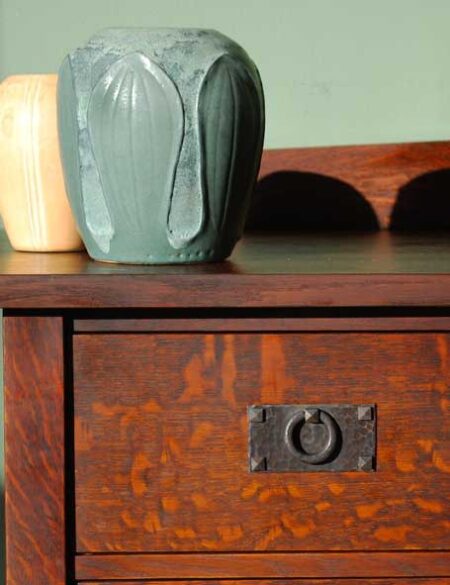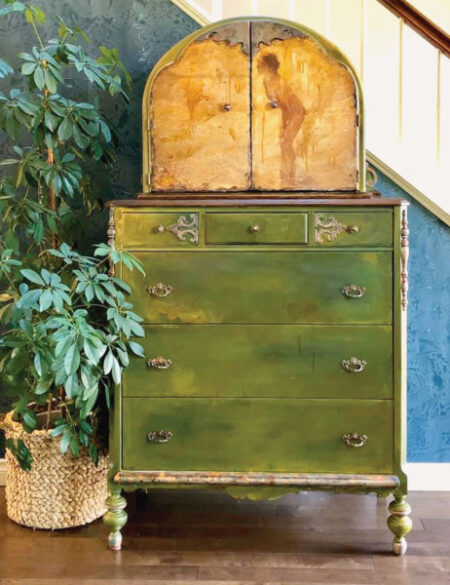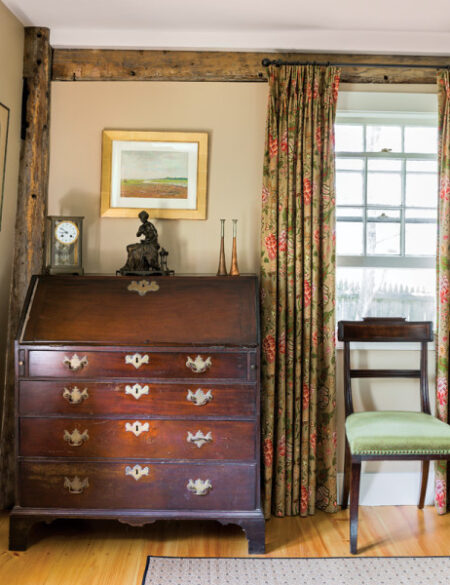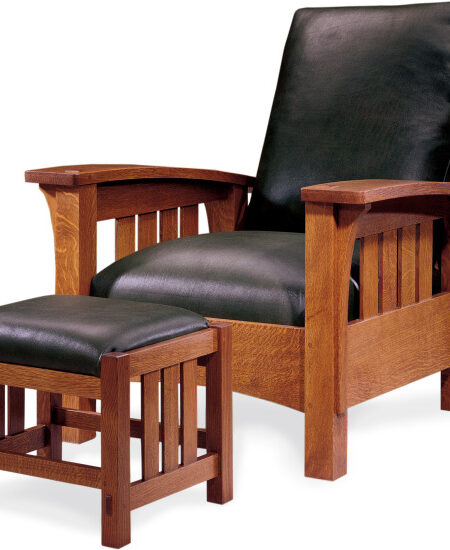This content was originally published on OldHouseOnline.com and has been republished here as part of a merger between our two businesses. All copy is presented here as it originally appeared there.
When their knockoff Duncan Phyfe dining chairs began falling apart, blogger Jami Boys and her husband, Brian, came up with a clever way to reuse them-turn the chair backs into the sides of an Empire-inspired bench.
See the steps to make the bench in the sections below:
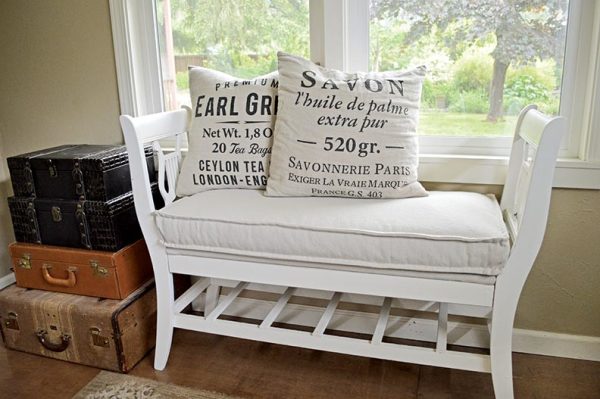
1. Remove the chair backs
Lay each chair on its back on a flat surface, and detach the seat and front legs by gently striking the chair back near the seat with a rubber mallet or dead blow hammer while pulling the front of the chair in the opposite direction. This should loosen the dowels and glue holding it together and allow you to pull it apart.
2. Create a base for the bench seat
Brian and Jami used 1“ x 2¼“ oak strips to create a sturdy 36“x 12“ frame, securing it by driving two 3½“ screws through the long piece and into the short one on each corner. Attach the chair backs to the frame by driving three screws through the bottom slat of each chair back and into the frame.
3. Add a bottom rail
For extra stability, Brian and Jami used stock pine 1“ × 2“ lumber to create a second frame 9“ below the seat. Screw the two long pieces of the frame directly into the chair legs, then screw the shorter cross-pieces into the long ones. Complete the bottom rail by finish-nailing five strips of ¾“ x 1“ molding, spaced 7“ apart, on top of the frame. You’re now ready to fill the nail and screw holes, prime, and paint the bench.
4. Make the seat
Cut a piece of ½“ plywood to the same size as the top frame. Cover it with a piece of quilt batting (cut about 1“ larger on each side than the plywood) and a durable fabric (cut about 2“ larger than the plywood). Pull the fabric taut over the batting, and staple it to the plywood with a staple gun. Finally, use two L-brackets with screws on the bottom of the seat to attach it to the frame.
Online Exclusive: See step-by-step photos of this project.


